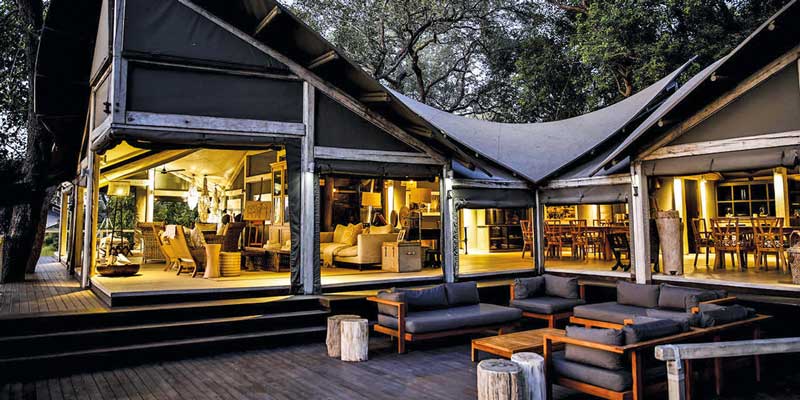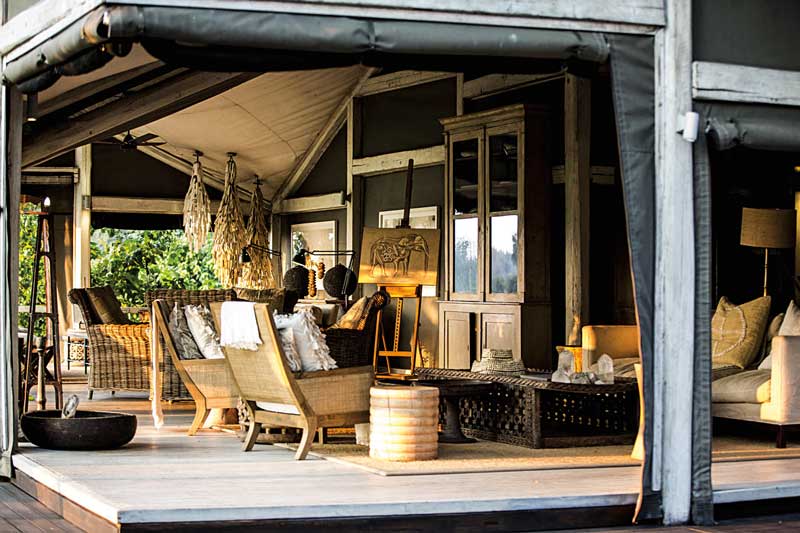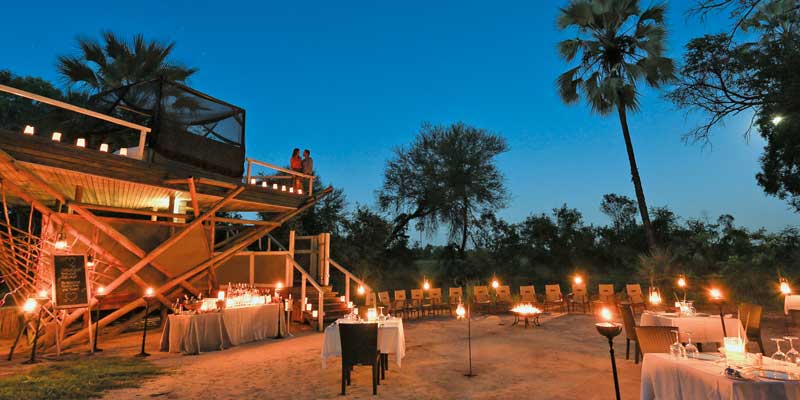Haven and Sanctuary to Interact with Elephants
This spectacular refuge at the heart of the Okavango Delta, one of the region’s last pristine wetlands, maintains an almost supernatural relationship with the elephants which roam here. Abu Camp takes its name from one of its most beloved specimens, and it’s also the perfect place to interact with these marvelous creatures.
Abu Camp is home to six suite-villas, each sporting its own distinctive design. The villas perfectly adapt to their natural surroundings, which can be admired from any of their multiple terraces, or, from a luxurious copper bathtub. Inside, guests can relax in a spacious living room, or spend the time creating art on one of the desks specifically designed for this sort of activity in the bedrooms.
The villas feature, as well, double and King-size beds, plus, sinks for him and her. The main attraction here is, without question, the Abu Elephant Experience: an inimitable opportunity in which our perception of these animals living in their natural habitat is transformed. The hotel staff will lead you to a face-to-face encounter with the members of the herd, from the playful calves to the wise bulls that lead the pack. Abu also offers the chance to interact with the elephants in various activities, creating unique and personalized experiences for each guest.
Seafaring and airborne activities are also an essential part of Abu Camp. It’s possible to take a boat trip through the quiet channels of the Delta, and a guided helicopter or plane tour that will take you to the very edge of the reserve. From the air, guests will be able to admire the roads that the elephants take to reach waterholes.
Meals are served al fresco on the hotel’s terrace, and are prepared by well-known chefs from around the globe. These dishes can be paired with some of the best reds and whites from South Africa, as well as sparkling wines from France.
Text: Andrés Ordorica ± Photo: NATURAL WORLD / EDEN LUXURY






